The River Road
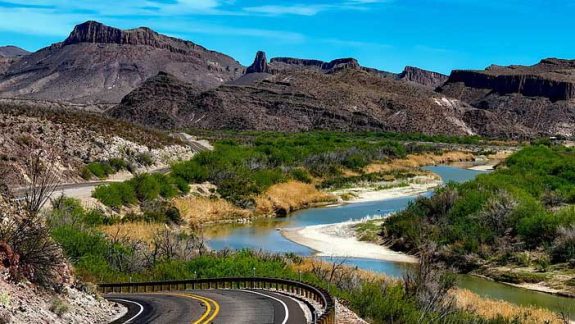
By James Moore
“Four wheels move the body, but two wheels move the soul.” – Unknown
There are roads that unspool in the memory as elegantly as they do under your wheels. Travel them once and vivid imagery remains available for recall. They need not wind through mountains or course along ocean shores, but sunlight, and horizons to pursue, distinguish certain journeys.
My experiences include riding up Glacier National Park’s “Going to the Sun” highway on a Honda 450 into a vista that grows more incomparable with each foot of elevation. That same little engine took me north on California’s legendary Pacific Coast Highway to sleep on the sand near Pismo Beach and trace the palisades along the oceanfront up to Big Sur. In Australia, I rented an adventure motorcycle to cross the continent and every mile felt epic but none more than the sweeping curves along the continental bight and the Great Ocean Road.
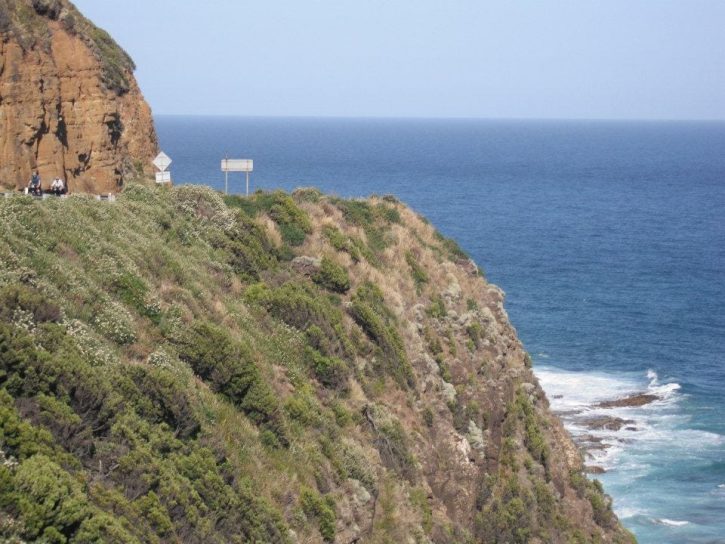
The Great Ocean Road, Australia
The longest stretch of straightaway in the world is said to be the 90-mile run of chip seal that crosses the Nullarbor Plain in the Outback and I figured motorcyclists had fallen asleep leaning over their handlebars while navigating the endless plain. In my memory, too, the Great Basin Highway’s run through Nevada seemed longer but maybe back then I had been in a hurry. The beauty of a roadway tends to reflect grand engineering, also, like the roll and climb of Ross Maxwell Drive that leads visitors to Big Bend National Park down to the mouth of Santa Elena Canyon’s 1500 foot walls, rising up from the banks of the Rio Grande. Trail Ridge Road, a 48-mile wonder that climbs from Colorado’s Estes Park to Grand Lake, reaches 11,500 feet above sea level where the air is too thin to support the existence of trees.
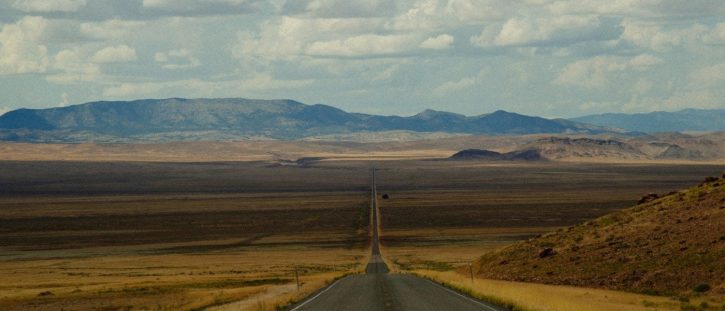
The Great Basin Highway, Nevada, Photo by Donald Giannatti on Unsplash
There are far too many to list but one that calls me constantly is the River Road, Texas Ranch to Market 170, from Presidio to Study Butte. I think I have worn out a few sets of motorcycle tires riding that pavement through its mesas and volcanic rock formations of pre-history, stealing glimpses of the Rio Grande between the canebrakes and blind rises. It is one of the great motorcycle roads in North America and belongs on every top ten list. My friend Wade Goodwyn and I had been planning his first motorcycle ride on the River Road for when he recovered from cancer. He had purchased his first big touring bike and was hoping for increased confidence and a bit of fun but each time we set a date, his health denied him that particular dream. Wade was an accomplished reporter for NPR, ready for retirement, and wandering without deadlines.
Wade and I never got to take our rides or have the adventures we had begun scheming because he was taken by cancer. When his wife, Dr. Sharon Sandell, told me he had insisted she get his new motorcycle to me, I was stunned, and I still am. My promise was to ride the highways and backroads Wade and I had discussed and give some life to his dream, and maybe, help to sustain the memory of a good man. Consequently, this past week, I took off for the River Road with some old friends, and a few new ones, to ride it once for Wade. The bike, bearing his initials, “WG,” was out front, leading pals Gary, Torsten, Uli, Sean, and Chase as we passed Fort Ben Leaton, east of Presidio.
The “rio” is not very “grande” these days, however. There seems to be almost no continuous flow and the snow melt from its source in the Southern Rockies appears to be giving little water to the river course. West of where we were riding, Mexico’s vast Rio Conchos valley meets the Rio Grande at “La Junta de los Rios,” the junction of the two rivers. The location is one of the longest inhabited in North America with ancient life and crops made possible by an abundance of water. In the contemporary era of debilitating drought, however, the U.S. is accusing Mexico of violating a water treaty by delivering only 30 percent of its contractual obligations of supplies. Only rain will help, and spring looks to finish dry. More crops will fail.
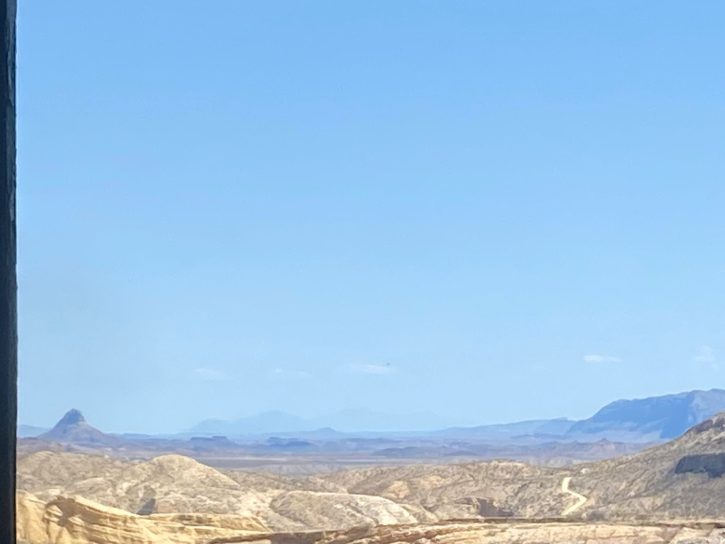
A Waterless Watershed – Photo by Chase Rivers
I am certain this ride would have been delayed by Wade, who would have been compelled to start conducting interviews and tell the story of the deepening international water crisis and dispute, and the people being harmed. I thought of him also as we shifted to lower gears to climb the big hill before descending toward Terlingua. We were stopping at the “Dom Rock,” the spot where characters in the movie Fandango had buried a bottle of Dom Perignon champagne to be dug up and opened after graduating from the University of Texas. Wade had asked me about the difficulty of hiking to the rock and standing on the Rio Grande overlook where Kevin Costner made his famous toast.
In Wade’s stead, Sean and Chase walked the dirt and stone track around to where the sun hit their faces and the Dom Rock’s. Maybe it is an imperfect way to remember the trip Wade and I had envisioned, and to honor him, but it’s a moment that mattered and it’s easy to see him standing there with his Goodwyn grin. Costner’s early film was a paean to the glories of youth and friendship and adventure with the inescapable cinematic theme that everything ends; we all leave each other, sometimes for different places and other people, but, eventually, each one of us is gone, by choice or chance.
We hung around in the sun, temperatures nearing 90, and not wanting to leave. After walking back down toward the overlook, we saw the remainders of the river reaching back toward Presidio. A few cottonwoods lined the north bank and ribbons of green ran where once there was water. We were thinking of a cold, cleansing ale on the front porch of the Terlingua General Store.
The greatest ambition of motorcycling is enjoyment, to feel and smell and see the landscape and know the pull of a horizon. You are lucky to have friends who share the love of the road on two wheels. You know a few things together that others do not, and not just how to plug flats in 100 degree heat or clean gunked-up fuel injectors at a rest stop.
Motorcycles are more than conveyances, though, and make possible emotions not as readily accessible as sitting behind a steering wheel. The road viewed through a windshield is just part of a movie; on the bike, you play a part in whatever adventure you devise or that is delivered to you by weather and circumstance. A sense of presence can become almost overwhelming.
A long motorcycle ride, it has been said countless times, offers the answer to a question you will soon forget. Life is reduced to basics by a motor that applies power to two wheels. Philosophy and anxiety do not run engines. Robert M. Pirsig, author of Zen and the Art of Motorcycle Maintenance, said, “Other people can talk about how to expand the destiny of mankind. I just want to talk about how to fix a motorcycle. I think that what I have to say has more lasting value.”
I am, increasingly, inclined to agree.
Like every time I’ve traveled the River Road, there was nothing I did not enjoy. I did sense the one rider missing, though, and wished that he had been along for the trip.
But, hell, maybe he was.
This article was originally published on Texas to the world.
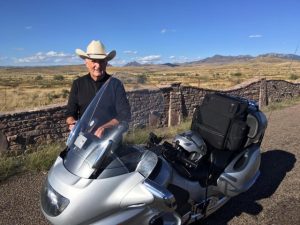
James Moore is the New York Times bestselling author of “Bush’s Brain: How Karl Rove Made George W. Bush Presidential,” three other books on Bush and former Texas Governor Rick Perry, as well as two novels, and a biography entitled, “Give Back the Light,” on a famed eye surgeon and inventor. His newest book will be released mid- 2023. Mr. Moore has been honored with an Emmy from the National Academy of Television Arts and Sciences for his documentary work and is a former TV news correspondent who has traveled extensively on every presidential campaign since 1976.
He has been a retained on-air political analyst for MSNBC and has appeared on Morning Edition on National Public Radio, NBC Nightly News, Last Word with Lawrence O’Donnell, CBS Evening News, CNN, Real Time with Bill Maher, and Hardball with Chris Matthews, among numerous other programs. Mr. Moore’s written political and media analyses have been published at CNN, Boston Globe, L.A. Times, Guardian of London, Sunday Independent of London, Salon, Financial Times of London, Huffington Post, and numerous other outlets. He also appeared as an expert on presidential politics in the highest-grossing documentary film of all time, Fahrenheit 911, (not related to the film’s producer Michael Moore).
His other honors include the Dartmouth College National Media Award for Economic Understanding, the Edward R. Murrow Award from the Radio Television News Directors’ Association, the Individual Broadcast Achievement Award from the Texas Headliners Foundation, and a Gold Medal for Script Writing from the Houston International Film Festival. He was frequently named best reporter in Texas by the AP, UPI, and the Houston Press Club. The film produced from his book “Bush’s Brain” premiered at The Cannes Film Festival prior to a successful 30-city theater run in the U.S.
Mr. Moore has reported on the major stories and historical events of our time, which have ranged from Iran-Contra to the Waco standoff, the Oklahoma City bombing, the border immigration crisis, and other headlining events. His journalism has put him in Cuba, Central America, Mexico, Australia, Canada, the UK, and most of Europe, interviewing figures as diverse as Fidel Castro and Willie Nelson. He has been writing about Texas politics, culture, and history since 1975, and continues with political opinion pieces for CNN and regularly at his Substack newsletter: “Texas to the World.”
Like what we do at The AIMN?
You’ll like it even more knowing that your donation will help us to keep up the good fight.
Chuck in a few bucks and see just how far it goes!
Your contribution to help with the running costs of this site will be gratefully accepted.
You can donate through PayPal or credit card via the button below, or donate via bank transfer: BSB: 062500; A/c no: 10495969









